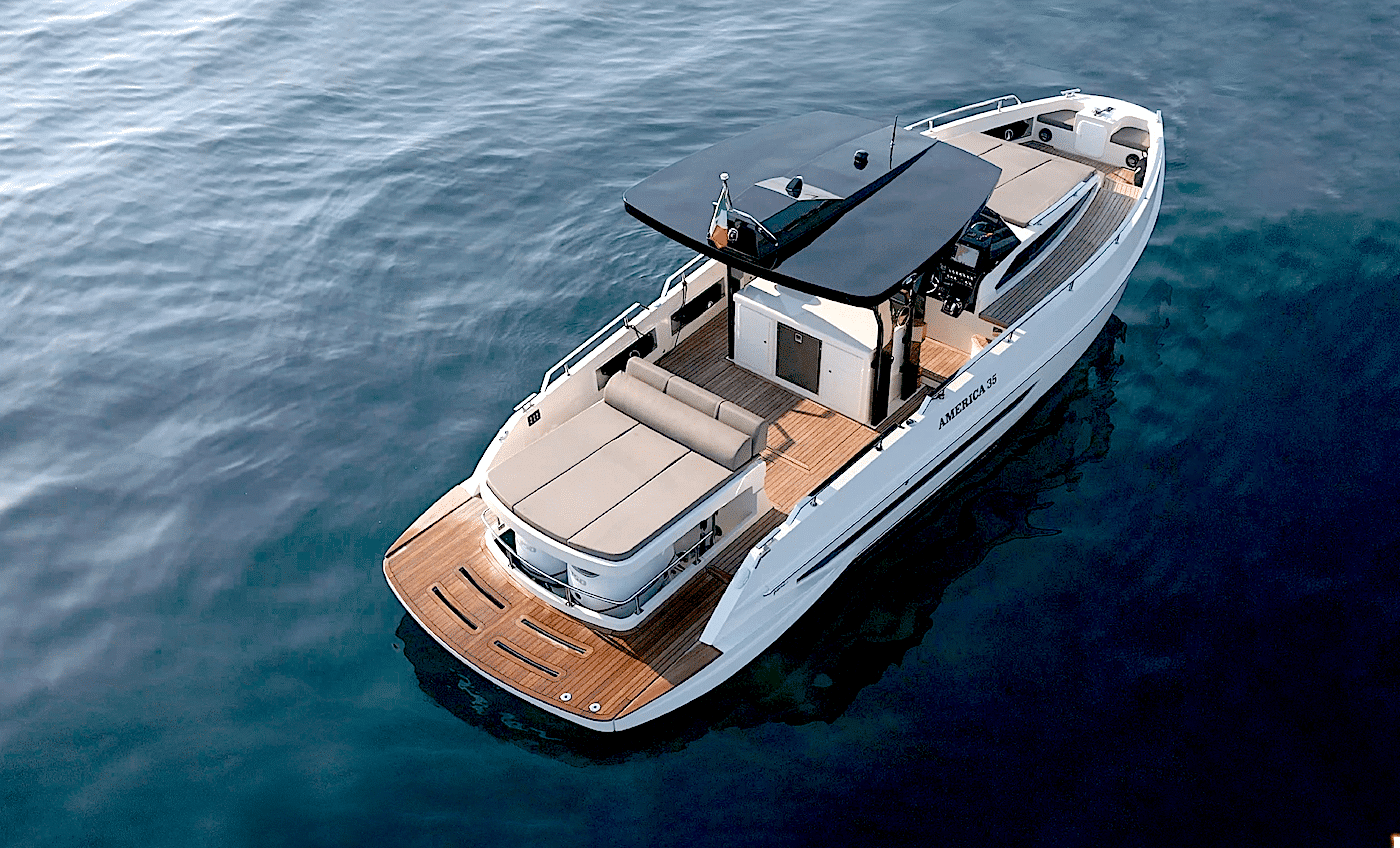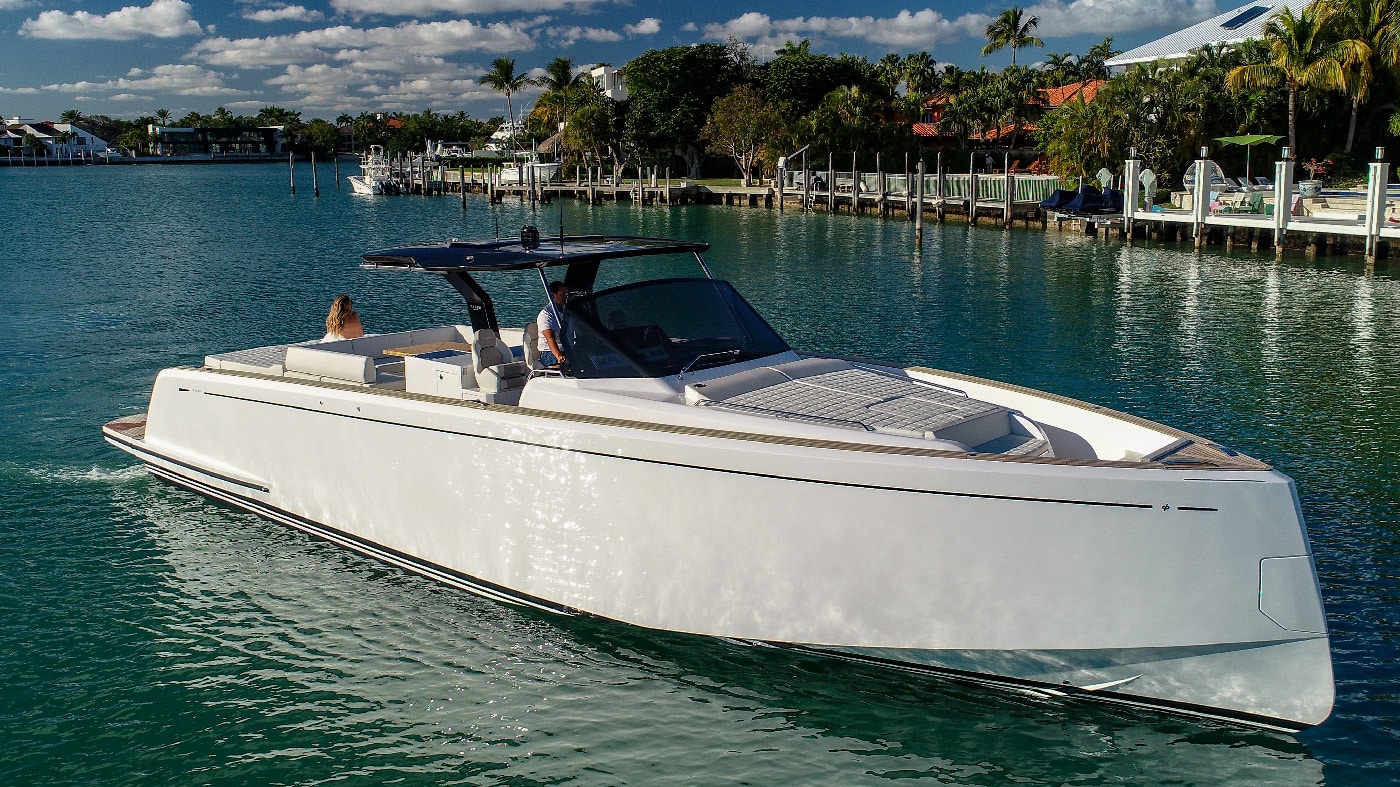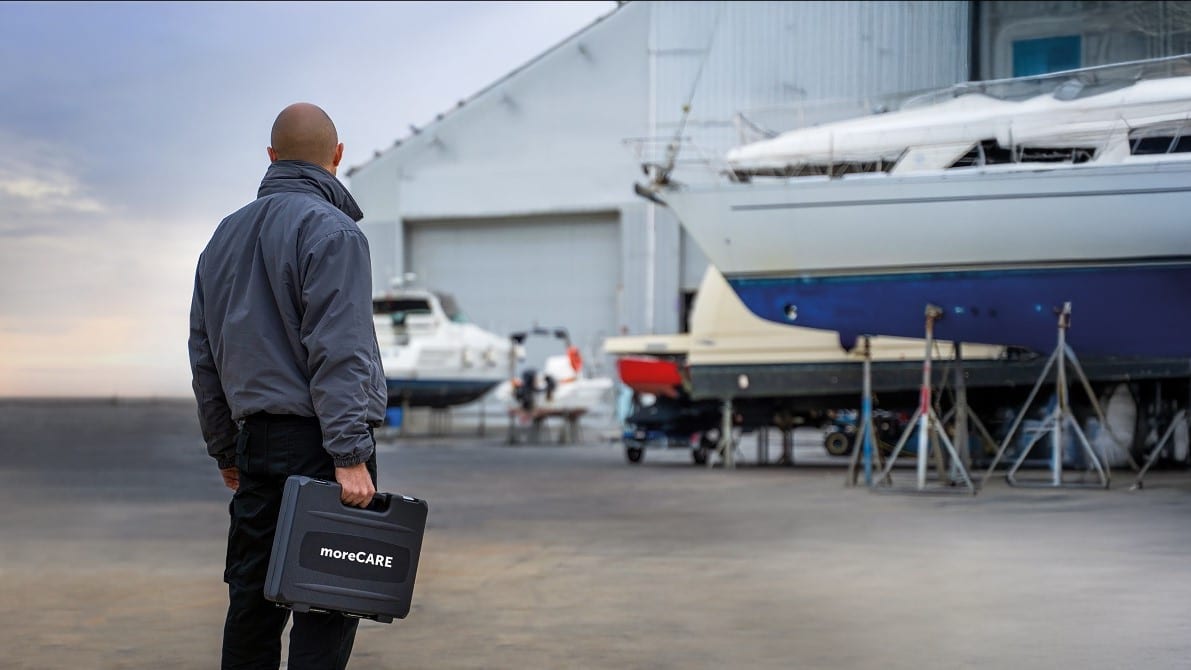Unmissable tips and tricks for safe boating with pets.
When it comes to boat holidays, one of the most frequently asked questions is about bringing pets along: can you bring animals on a boat? How should you behave to ensure they have a calm and safe experience?
The good news is that yes, you can bring your pets on a boat, boating with pets is easy if you take some important precautions, such as making the environment as welcoming as possible for their needs.
In the following guide, we will explore everything there is to know about boating with pets: necessary documents, what to pay attention to, how to intervene to keep your pet healthy, tips, in-depth information, and much more.
Boating with pets: Documents and Legislation
Pets, such as dogs, cats and ferrets, are subject to precise regulations, especially when travelling and boating with pets it’s not an exception. Regarding travels between European territories, the transport of animals is allowed when they are equipped with:
- Microchip,
- Rabies vaccination (considering that the vaccine is valid 21 days after administration for a period of one year)
- Valid European passport
You can request the European passport from any veterinarian authorized by the competent authorities to issue passports for pets. Once issued, it will be valid for the animal’s entire life (if rabies vaccinations are kept up to date) and will contain the animal’s medical history.
When the destination is outside the European Union, it is essential to inquire about the specific regulations of each country that govern the entry of pets.
How to secure your boat and have all you need aboard

Securing the boat means ensuring that your four-legged friend doesn’t accidentally fall overboard or get hurt on sharp surfaces. For example, dogs, with their clumsy and rough temperament, are more likely than cats to accidentally fall overboard. Therefore, where possible, it is advisable to install containment nets along the perimeter of the boat, especially if it is a sailboat, as tall and thin guardrails can facilitate unintentional falls into the water.
It can also be helpful to install non-slip rubber pads in strategic places, such as on stairs or certain areas of the deck, where the pads of dogs and cats often lose grip. Animals are natural explorers, and boats are full of small corners with interesting scents. It’s important that all areas of the boat are made pet-friendly, meaning that small spaces where a cat could easily get stuck should be made inaccessible, and, conversely, spacious enough areas for entering and exiting should be made reachable.
Litter box and Physiological Needs
If your pet is a cat, it will need a litter box with sand to attend to its needs. Closed litter boxes take up more space but are significantly more effective in containing the sand during the animal’s use and in case of rough seas. In any case, it is advisable to place it below deck, in the bathroom, or under a table, where stability is greater.
A useful tip to gradually introduce the cat to the maritime environment is to have it use the litter box intended for the boat a few months before departure. This way, the cat can get used to the size of its new bathroom, and the scent becomes somewhat familiar when in a context where everything is new.
It can also be helpful to purchase biodegradable sand because its natural properties allow you to dispose of it directly into the sea without invading enclosed spaces with unpleasant odors.
If, on the other hand, your pet is a dog, it will have different needs for attending to its needs.
Naturally, for its health, it is advisable to keep navigation segments not too long and disembark several times a day. However, if this is not possible, you can equip yourself with litter boxes, absorbent mats, or synthetic grass carpets. Similar to the cat, you can introduce these new tools well in advance of the boating vacation, allowing sufficient time for them to learn how to use them properly.
Boating with pets: Sunscreens and Anti-Nausea Medications
Animals can also get sunburned from excessive exposure to sunlight. For this reason when you are boating with pets, it is advisable to bring a specific veterinary sunscreen to protect sensitive areas from sunburn.
During the initial days of your boating vacation with your pets, you may discover that they experience motion sickness (kinetosis).
In such cases, swaying, fatigue, and nausea can be uncomfortable presences on board, and it can be very useful to follow these precautions to make your pets’ stay on the boat as stress-free as possible:
- Dosis venenum facit, or ‘the dose makes the poison,’ meaning that the dosage determines the toxicity of any substance. In our case, proceeding calmly and in ‘small doses’ to acclimate our pet to the boat can prove to be a winning strategy. Short stays in the new maritime environment can help them gradually adjust to a rocking home.
- Avoid, at least initially and especially before sailing, heavy meals to avoid taxing their digestive system.
- Precede the entry onto the boat with moments of play to help them ease into a relaxed dimension of the experience.
- Consider using veterinary anti-nausea medications.
Useful Accessories
Lastly, let’s explore what can help your dog or cat have a calm and safe boating experience.

Safeline: The safety line serves the same purpose for both humans and animals, preventing falls into the sea during navigation. With a cat on board, it might be inconvenient to use it since, by their explorative nature, they move around irregularly. In this case, attaching a leash or a long rope to the harness can be helpful, allowing them to explore the environment safely. If they attempt to go into dangerous areas, you can prevent them from doing so.
Various toys: Your travel companion is, first of all, a pet, in need of moments of play, hunting, and exploration. Bringing some of their favourite toys on board can help them feel secure and recreate the home environment.
Boating with pets: What to Do Before Setting Sail

If your future sailor is a cat, it will be essential to give them the opportunity to develop new habits at their own pace. This significantly increases their tolerance to change and helps them approach the vacation with serenity.
For instance, a harness on the boat is very useful, if not essential. It allows your cat to explore spaces under your supervision while giving you the chance to prevent them from venturing into hidden nooks.
Getting your cat accustomed to the harness well in advance will be one of the best strategies you can adopt. Small sessions, positive reinforcement, and a lot of patience are the three ingredients to help your feline accept and embrace this new tool.

It can be helpful, therefore, to buy a backpack carrier, more comfortable for the human on the go and a novelty for the guest. Getting the cat used to short sessions in the backpack, accompanied by positive reinforcements and play, can soften its hostility towards changes. Once on board, it may be useful to open the carrier and let the cat choose whether to come out or gradually acclimate to the new environment. It might take several minutes before it feels secure enough to come out (with a harness and leash!).
Finally, as we saw earlier, having the cat use the designated litter box for the boat even before boarding represents an additional consideration for its well-being and an effective prevention of changes in the cat’s bowel habits.
As for dogs, it can be useful to teach them to use synthetic grass, absorbent pads, or a litter box even before boarding. This way, they will already know how to behave in the new environment.
Like with cats, the keyword is patience. Just like humans, dogs also need their time to adapt to changes. Short sessions and positive reinforcements will help you introduce your dog to this new floating world.
Putting well-being first

Of course, each dog and cat has its own unique personality traits that only you, as owners, are familiar with. It’s important to adapt the environment and stimuli to the needs of your pet and not overly force its habits.
- Recreating the home environment: You can bring aboard your pet’s toys and its favorite blanket, bed, or any object that makes it feel secure and carries the familiar “smells of home.”
- Allocate a well-ventilated and shaded space where your dog or cat can rest during the boat journey.
- Keep the water in the bowl fresh and clean, always mindful that you are on a boat and it could spill with the movement of the waves.
- Provide your travel companion (especially if it’s a dog) with stimuli to play with during the journey. If your cat doesn’t suffer from seasickness, it will likely find a small and snug corner to rest securely.
- Allow your dog or cat to thoroughly explore the boat environment. Animals need to check every cabin and corner to feel safe in their surroundings, ensuring there are no predators or other dangers. Accompany your guest in calmly and patiently discovering the new environment, confident that the more you accommodate their needs in the initial exploratory stages, the safer and more pleasant their experience on board will be with you.



























